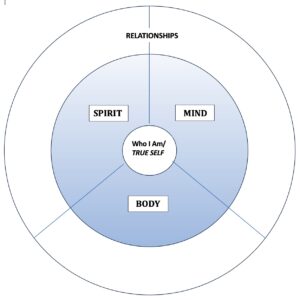In Yogic, Buddhist and Taoist terms, the “wheel of life” or the cycle of birth and death is an ongoing and evolving experience. In these ancient belief systems, humans are vulnerable to repeating the birth-death cycle over and over again, unless we refine our awareness. What causes our vulnerability or suffering is the latent impressions and imprints (samskaras) we absorb through our human birth and growth process. Once we become aware of the life patterns holding us in this repetitive cycle, we can break free from what no longer serves us by altering our intentions and actions.
Thus, samskara is the life cycle or energy (both positive and negative intentions and actions) that keeps us in human form. Enlightenment, on the other hand, is the evolutionary process of using our intentions and actions to elevate our consciousness and, thereby, free ourselves from suffering and delusion. The “bad” news is, these samskaras (conditioning and delusions) are always present and cannot be completely destroyed. The “good” news is, there are nine delusions or obstacles, they are predictable and they can be transcended.
[W]e’re born with a karmic inheritance of mental and emotional patterns—known as samskaras—through which we cycle over and over again during our lives. Bo Forbes
In Patanjali’s Yoga Sutras (1.30 – 1.32), he instructs us that awakening our higher consciousness releases us from the grip of these nine obstacles. The obstacles, also referred to as mental distractions are —
- Illness/physical disease
- Laziness/mental dullness/procrastination
- Doubt/indecision
- Lack of attention/carelessness/negligence
- Lack of enthusiasm/apathy/sloth
- Sensuality/cravings/sexual indulgence
- False perception/confusion
- Failure to attain/progress
- Inability to maintain concentration; inconstancy; instability
These nine mental distractions, which reside in our unconscious, may be too challenging to self-diagnose. If this is the case, Patanjali provides us with four symptoms, which are the consequences of our samskaras. These are found closer to the surface and much easier to see —
- distress/anxiety
- despair/depression
- trembling/unsteadiness of the body
- irregular/disturbed breathing
In the process of awakening to our true spiritual identities, we begin with our largely unconscious inner world. By shining our awareness on our unconscious, but predictable, samskaras, we begin the journey of bringing ourselves into being. We shift our negative samskaras into positive ones.
Shifting samskara … is the ongoing work of chipping away at our negative patterns to illuminate the purity of the soul. Like alchemists in our own transformation, we constantly refine and direct our samskara into healthier designs.
… the ability to shift our patterns—once we’ve sown the seeds—is self-generating, self-sustaining, and self-renewing. When we’re patient enough to facilitate samskara’s organic process, to honor its inner sound and slow rhythm, change simply flows. And it’s a joy to taste the reward of all this hard work in its natural form, the sweetness that arises from seeing long labor and preparation come to fruition.
Bo Forbes
Yoga’s Organic Process:
In order to ensure our positive physical, mental and spiritual evolution, we need to repattern our negative samskaras/conditioning. In yoga, we do this with single-pointed focus (concentration). There are many forms in which concentration can be practised—friendliness, compassion, joy and equanimity; pranayama; meditation; yoga actions in asana; and extraordinary perceptions. Regardless of the form practised, the principle of concentration awakens the organic process described below.
- Shani (slowing down to intuit) allows us to intercept our impulsive samskara reactions and to reflect and gain insight on more authentic responses. Ask yourself, “What sensations am I experiencing?”
- Vidya (awareness; clear seeing) recognizes the negative samskaras (thoughts, emotions and actions) and raises the deeper question, “What is this sensation/pattern telling me?”
- Abhaya (fearlessness) enables us to face the unknown, which is always encountered when ending a familiar pattern. This ‘in-between’ space or void, prior to our new beginning, is rich with learning and new possibilities.
- Sankalpa (positive intention) communicates what we want (our new vision; positive samskara) to our physical, emotional and spiritual bodies. Ask yourself, “What do I want to experience?”
- Abhyasa (practice) strengthens the new samskara by reinforcing the new groove in our brain and diminishing the old samskara. Practicing the new samskara teaches us what triggers a relapse. “What action must I keep taking to have this experience?”
As you may have guessed, we can end the cyclical and conditioned nature of samskara. Yoga’s aim is to transcend these lower delusional states of consciousness. By doing so, maybe even in this lifetime, we acquire calm and clear seeing, also referred to as enlightenment.
… the fundamental reason we do not experience enlightenment is the fact that consciousness is falsely identified with the many levels of conditioning. Swami Jnaneshvara





